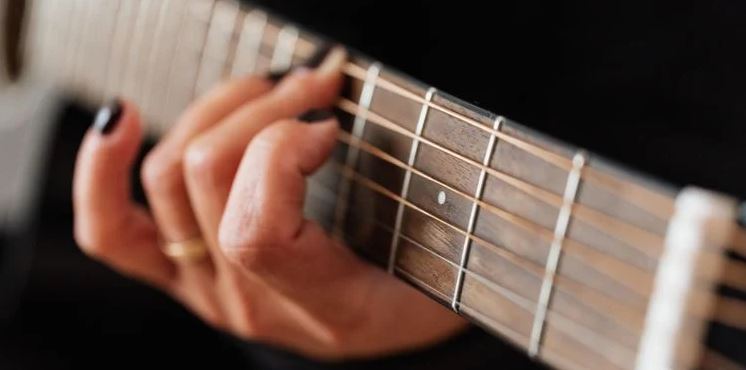How to Record Electro-Acoustic and Acoustic Guitar – Recording your acoustic or electro-acoustic guitar sounds really easy, but without the right proceedors, you might end up with disappointing results.
Both guitars prouduce the same quality of sounds when played unplugged, most common methods will work on both types of guitars, but not all of them, however.
Let’s learn the best ways of recording your guitar, be it fully acoustic or electro-acoustic.

Table of Contents
Effective Ways of Recording Your Guitar
Baically, there are three ways you can record your guitar, which are:
- Single-microphone recording
- Stereo recording
- Recording via a direct input (for elector-acoustic guitar only)
The recording process is similar between these methods, but the setup is going to be different and will give your different sounds when produced.
⦁ Single-Microphone Recording
This recording involves one microphone. Let’s outline the best ways you can record your guitar with a single microphone.
Acoustic Guitar
First of all, you wouldn’t want your mic placement to be right in front of the sound-hole. This will drown out any nuance in your recording and give you an overly bass, muddy sound.
It’s best to to begin by placing your microphone about six inches form the 12th fret. When recording an acoustic guitar using one microphone, you should look at using a condenser microphone, either with a large or small diaphragm
Electro-Acoustic Guitar
To get the natural acoustic tone that comes out of your electro-acoustic guitar, then you’d have to exactly the same thing you did for with a fully acoustic guitar.
How close or far you place your microphone depends on how much of the “room” you want to capture.
To capture your electro-acoustic’s sound amplified sound, you should use your amp as the sound source, confirming that your microphone is not in front of your guitar, but your amp.
⦁ Stereo Recording
Stereo recording requires two mics to record an instrument simultaneously with independent left and right channels, giving it a “Stereo” effect.
Depending on how skilled you are with your instruments, you can manipulate the stereo effect by placing mics in different positions so the sound can hit each mic at slightly different times and at different frequencies.
Like always, all methods also has it flaws, namely getting the mic positions correct. Stereo recordings are also harder to edit than single-microphone recordings.
For the techniques mentioned below, you should be stereo recording using two of the same type of microphone to minimize any phasing issues.
Acoustic Guitar
The most common types of stereo recording techniques are A\B and X\Y stereo recordings, which are the best for recording your acoustic guitar.
A/B stereo recording involves placing two microphones, ideally two small-diaphragm condenser mics, parallel to each other at different points on your guitar.
X/Y stereo recording involves placing two microphones, again ideally small body diaphragm condenser mics, at a 90 to a 130-degree angle, with the capsules lined up next to each other or one on top of the other.
Electro-Acoustic Guitar
If you want to capture your electro-acoustic guitar’s unplugged sound, then you should follow the same process as you would with a fully acoustic guitar.
However, if you wish to record your electro-acoustic guitar through an amplifier, you should use the make use of the techniques in the above section but with personal guitar amp.
⦁ Recording via a Direct Input (Electro-Acoustic Guitar Only)
For electro-acoustic guitarists only, you can record your electro-acoustic guitar directly into your digital audio software (DAW) via your guitar’s direct input (DI).
This is done by plugging in your electro-acoustic guitar using your standard 1/4-inch guitar cable to an audio interface, which you then connect to your computer.
By itself, this can sound very unnatural as none of your guitar’s ambiance and acoustic sound is going to be recognized. Against a microphone recording of another instrument, such as vocals, this will sound very out of place if left unedited.
ALSO READ>>>>Link and Unlink Instagram to Facebook: Quick & Easy Steps
Was this article helpful?
YesNo





